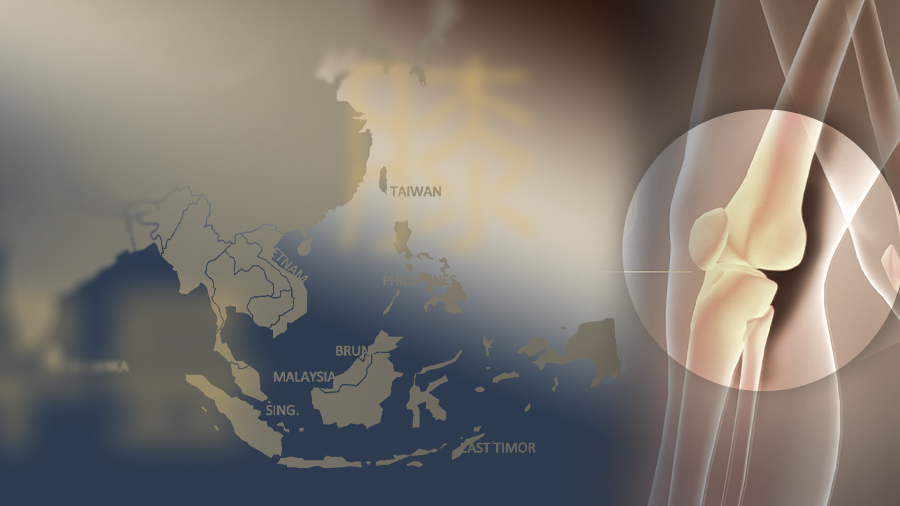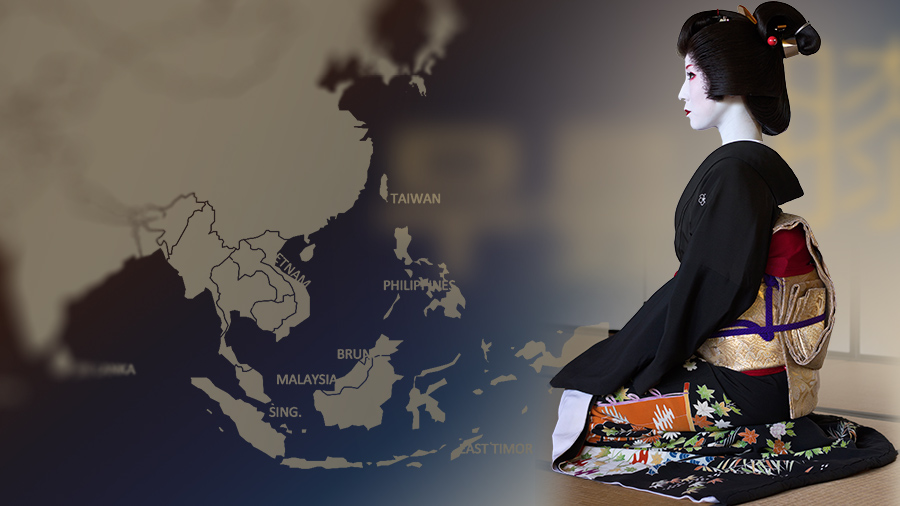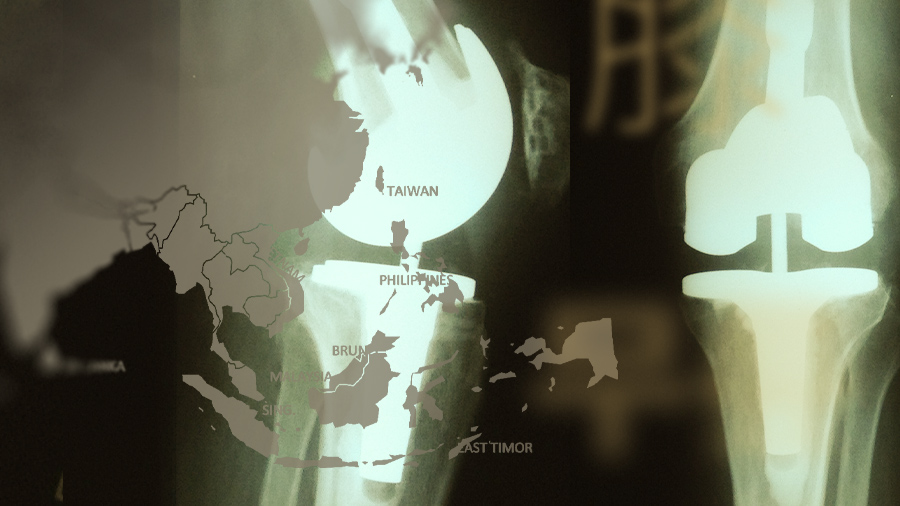Anatomical variations in Asian knees: one size does not fit all
Preview
TKR requires precision. Accurate bone cutting, soft tissue balance and adequate resected surface coverage can all influence TKR success. This is why a number of practitioners [1] have started to question the use of prosthetics designed for Caucasian knees with Asian patients. Ethnicity, it seems, creates very different types of knees that may require equally variable treatment.
Part 1 in this series of articles on TKR in the Asian knee looked at cultural influences upon usage as well as patient expectations. Here we will examine the inherent anatomical differences of Asian TKR patients.
Different from the start
Knee alignment and growth rates can vary widely across regions. For example, the majority varus (inward angulation) TFA (*) observed [2] in Chinese children as young as 2 years old differs markedly from the reportedly majority valgus (outward) alignment of Indian, Korean, Nigerian, and white children of the same age [3].
At the same time, Turkish children have even more pronounced valgus TFA, so that up to 11 degrees physiological valgus is considered within the normal range for Turkish children between 3 and 17 years of age [4].
Also, the mean IMD of Chinese children has been shown to decrease after 3 years of age, returning to zero at roughly 8 years of age. White children, meanwhile, were found to be maximally bow-legged at 6 months, returning on average to neutral by 18 months. Bowlegs are considered unusual amongst white children after 2 years of age. Whereas in Korea a similar knee angle development process was found to occur at a different pace, so that the varus alignment of Korean children neutralized at 1.5 years of age and valgus alignment peaked at 4 years of age [5].
In Nigeria, the distribution of knee angles becomes bi-modal after 6 months of age, with half varus and half valgus, returning to majority valgus after two years of age [6]. Nigerian children became maximally and uniformally knock-kneed between 3 and 3.5 years of age [6], while Indian children reached maximum valgus between 5 and 6 years of age [3].
Body weight does not appear to significantly influence these variable growth rates [4], so it is likely that they reflect the ethnical and racial differences between regions [1].
Read the full article with your AO login
- Mismatch
- Tibial placement
- Aspect ratios
- The angles
- Patellar dimensions
- Gender considerations
- Design recommendations
- References
Additional AO resources
Access videos, tools, and other assets to learn more about this topic.
- Upcoming events: AO Recon Course finder
Contributing experts
This series of articles was created with the support of the following specialists (in alphabetical order):

Myung-Chul Lee
Seoul National University Hospital
Seoul, South Korea
This issue was created by Word+Vision Media Productions, Switzerland
References
- Hosseinzadeh HRS, Tarabichi S, Shahi AS, et al (2013) Special Considerations in Asian Knee Arthroplasty. Chapter. Intech Creative Commons Licence.
- Cheng N, Shi Q (2010) [Rehabilitation exercises after single total knee replacement: a report of 38 cases]. Zhongguo gu shang= China journal of orthopaedics and traumatology. 23(3): p. 220–221.
- Saini UC, Bali K, Sheth B, et al (2010) Normal development of the knee angle in healthy Indian children: a clinical study of 215 children. Journal of children's orthopaedics. 4(6): p. 579–586.
- Arazi, M, Ögün TC, Memik R (2001) Normal development of the tibiofemoral angle in children: a clinical study of 590 normal subjects from 3 to 17 years of age. Journal of Pediatric Orthopaedics. 21(2): p. 264–267.
- Yoo JH, Choi IH, Cho TJ, et al (2008) Development of tibiofemoral angle in Korean children. J Korean Med Sci. 23(4): p. 714–717.
- Oginni LM, Badru OS, Sharp CA, et al (2004) Knee angles and rickets in Nigerian children. J Pediatr Orthop. 24(4): p. 403–407.
- Iorio R, Kobayashi S, Healy WL, et al (2007) Primary posterior cruciate-retaining total knee arthroplasty: a comparison of American and Japanese cohorts. J Surg Orthop Adv. 16(4): p. 164–170.
- Chiu KY, Zhang SD, Zhang GH (2000) Posterior slope of tibial plateau in Chinese. J Arthroplasty. 15(2): p. 224–227.
- Yoo JH, Kang YG, Chang CB et al (2008) The relationship of the medially-offset stem of the tibial component to the medial tibial cortex in total knee replacements in Korean patients. J Bone Joint Surg Br. 90(1): p. 31–36.
- Cheng FB, Ji XF, Lai Y (2009) Three dimensional morphometry of the knee to design the total knee arthroplasty for Chinese population. Knee. 16(5): p. 341–347.
- Hovinga KR, Lerner AL (2009) Anatomic variations between Japanese and Caucasian populations in the healthy young adult knee joint. J Orthop Res. 27(9): p. 1191–1196.
- Kwak DS, Surendran S, Pengatteeri YH, et al (2007) Morphometry of the proximal tibia to design the tibial component of total knee arthroplasty for the Korean population. Knee 14(4): p. 295–300.
- Vaidya SV, Ranawat CS, Aroojis A, et al (2000) Anthropometric measurements to design total knee prostheses for the Indian population. J Arthroplasty. 15(1): p. 79–85.
- Mahfouz M, Abdel Fatah EE, Bowers LS, et al (2012) Three-dimensional morphology of the knee reveals ethnic differences. Clin Orthop Relat Res. 470(1): p. 172–185.
- Yip DK, Zhu YH, Chiu KY et al (2004) Distal rotational alignment of the Chinese femur and its relevance in total knee arthroplasty. J Arthroplasty. 19(5): p. 613–619.
- Baldwin JL, House CK (2005) Anatomic dimensions of the patella measured during total knee arthroplasty. J Arthroplasty. 20(2): p. 250–257.
- Kim TK, Chung BJ, Kang YG, et al (2009) Clinical implications of anthropometric patellar dimensions for TKA in Asians. Clin Orthop Relat Res. 467(4): p. 1007–1014.
- Hitt K, Shurman JR 2nd, Greene K, et al (2003) Anthropometric measurements of the human knee: correlation to the sizing of current knee arthroplasty systems. J Bone Joint Surg Am. 85(suppl 4): p. 115–122.
- Chaichankul C, Tanavalee A, Itiravivong P (2011) Anthropometric measurements of knee joints in Thai population: correlation to the sizing of current knee prostheses. Knee. 18(1): p. 5–10.
- Tamari K, Tinley P, Briffa K et al (2006) Ethnic-, gender-, and age-related differences in femorotibial angle, femoral antetorsion, and tibiofibular torsion: cross-sectional study among healthy Japanese and Australian Caucasians. Clin Anat. 19(1): p. 59–67.
- Yue B, Varadarajan KM, Ai S, et al (2011) Gender differences in the knees of Chinese population. Knee Surg Sports Traumatol Arthrosc. Jan;19(1):80–8.
- Tang W, Zhu Y, Chiu K (2000) Axial Alignment of the Lower Extremity in Chinese Adults*. J Bone Joint Surg Am. Nov;82-A(11):1603–8.
- Moreland JR, Bassett L, Hanker G (1987) Radiographic analysis of the axial alignment of the lower extremity. J Bone Joint Surg Am. Jun;69(5):745–9.
- Nelson AE, Braga L, Braga-Baiak A, et al (2009) Static knee alignment measurements among Caucasians and African Americans: The Johnston County Osteoarthritis Project. J Rheumatol. Sep;36(9):1987–90.
- Abraham R1, Malkani AL, Lewis J, et al (2007) An anatomical study of tibial metaphyseal/diaphyseal mismatch during revision total knee arthroplasty. The Journal of arthroplasty. J Arthroplasty. Feb;22(2):241–4.
- Fang Y, Fu X, Chi L, Wang G, et al (2006) [The biomechanical study of rotating-arm self-locking intramedullary nails in comminuted femoral shaft fractures]. Sheng Wu Yi Xue Gong Cheng Xue Za Zhi. Oct;23(5):1041–4




